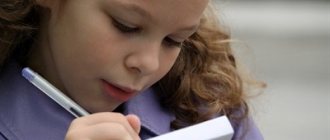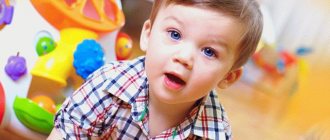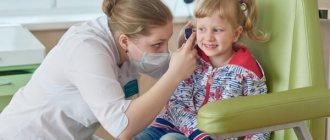Vocabulary is the number of words that a person understands and uses in speech. Moreover, he uses some of them, but not the other. Thanks to speech, we communicate with each other, expressing our thoughts and conveying them to our interlocutor, forming beliefs and developing intellectually. The richer, more literate and expressive a person’s speech is, the higher his level of education and cultural development is considered.
The lexical dictionary of children and adults consists of two categories:
- Active vocabulary is words that a person uses regularly in speech and writing.
- Passive vocabulary - consists of words that a person knows and perceives by ear, but does not use himself. Significantly exceeds the active dictionary.
There is no exact answer to what an adult’s reserve should be. For example, the dictionary of V.I. Dahl contains more than 200 thousand words, the academic dictionary of the Russian language - approximately 130 thousand words, the latest edition of the dictionary by S.I. Ozhegova – 70 thousand words. Obviously, even the most erudite people do not speak such a volume of vocabulary. According to the latest research data, an adult’s active vocabulary ranges from 5 thousand to 35 thousand words, passive - from 20 thousand to 100 thousand words.
Online tests help you check your vocabulary and evaluate it. But the results for the same person over different periods of time may differ, since he is constantly developing - he learns new words, but at the same time forgets or stops using previously learned ones.
As a rule, people with a rich vocabulary have more prospects, achieve goals faster, and achieve success in their careers, management, and show business. According to the majority, their work is more interesting, creative, extraordinary, and their achievements are higher. The same applies to your personal life. A person with a large vocabulary better formulates his thoughts, verbalizes desires and emotions, and due to this, he better finds a common language with people.
Vocabulary can be compared to a snowball: the more complex concepts a person knows, the more new words and terms he is able to perceive, remember and use in his speech. This is why it is necessary to develop a child’s speech from early childhood.
Active and passive vocabulary
Vocabulary can be active or passive. By active we mean the words that the child uses in conversation. Passive vocabulary is a set of words that a preschooler learns by ear or in books, but does not use himself.
Let's explain with an example. You show your one-year-old child pictures of pets and ask where the dog is. The kid points to the corresponding image. This means that the word "dog" is in his passive vocabulary. When a child independently pronounces this word for the first time or utters a similar combination of sounds, endowing it with the corresponding meaning, it means that the transition from a passive to an active dictionary has taken place.
Passive vocabulary is always greater than active. Many adults know what “anticipate,” “correlation,” or “ambivalent” means, but they are rarely used in speech. The child has the same thing, and this is normal.
Is learning languages good for speech?
Early learning of languages helps the development of a child’s speech if this process brings joy to parents and the baby. Therefore, you need to switch to the foreign language that you like best and know best.
Bilingual children begin to speak earlier from birth if both parents actively communicate with them.
“I often compare learning a second language to learning to swim,” Olga explains. If a child begins to master this activity at 3–4 months, then by the age of three he will already be able to swim perfectly independently. Then you can start teaching him how to ski, say. And if you start swimming at the age of three, then, of course, this process will take much longer, and parallel training in different sports can cause certain difficulties. It’s the same with languages.”
How to calculate the volume of a child’s active and passive vocabulary?
To calculate the volume of your baby’s passive vocabulary, invite him to point to a particular object, animal, plant or person. Did you answer correctly? This means that we count the word into the passive lexicon.
When assessing a child’s active vocabulary, not only those words that the child pronounces clearly are taken into account, but also the following:
• onomatopoeic words (“bi-bi”, “meow”, “ko-ko”);
• incomplete words (“koun” instead of “clown”, “baka” instead of “dog”, “kopomosch” instead of “ambulance”);
• words that are reproduced incorrectly, but the number of syllables and stress are correct: “makakat” instead of “scooter”.
• words with the same sound but different meanings, for example, “ma”, meaning mother, cat, and car. Each value should be counted separately.
To make it easier to measure the size of your child’s vocabulary, we recommend keeping a diary of speech development. This will help you contact a specialist in time if speech development lags far behind the average statistical norms.
Features of speech development in children 3–4 years old
At 3 years old, children know from 800 to 1000 words, they love to communicate and conduct dialogue. Here's what a 3-year-old child does:
- speaks in full words, rarely uses simplified versions of words, onomatopoeia;
- talks about things and phenomena at a simple level;
- generalizes - combines objects into groups;
- knows what the characteristics of things are and distinguishes by them;
- establishes connections between objects;
- uses conjunctions, verbs with prefixes.
Here are some other features of the development of speech in children aged 3–4 years: they do not pronounce sounds clearly enough, although hard and soft sounds are easy for most. Without the help of their parents, they will not be able to retell a cartoon they saw or a fairy tale they read - they do not know how to construct a logical narrative. A 3-year-old child makes mistakes: he incorrectly uses case endings, prepositions, and forms the plural of a noun.
Speech development in a 4 year old child
Skills reach a higher level. Vocabulary doubles to 2000 words.
Here are the features of speech development in children 3–4 years old:
- Use nouns and verbs;
- Sometimes they use adverbs, pronouns, and numerals;
- Knows possessive adjectives (dog ears, fox tail);
- Correctly combine words in sentences;
- They answer with detailed phrases of 3–4 words;
- They come up with new words - word creation;
- Words rhyme by sound.
A 4-year-old child speaks more clearly and clearly. Although in complex words it can omit or replace syllables. Hissing and sonorous sounds are not for everyone.
Sensitivity and interest in language appears. At this age, all children are “why” minds: they are interested in the origin of words, who invented them, why objects are called that way.
Another feature of the speech development of children 3–4 years old is that they notice how other people speak and understand the essence of the plot pictures.
Ways to develop a child's vocabulary
Read more
When we read a book to a child, he encounters situations and objects with which he has not interacted before and may never encounter them. Let's give an example: a child from central Russia can see a giraffe, a jerboa or a weaver bird only in a zoo, and thanks to reading the book “The Monkey's House” by Boris Zakhoder with good illustrations, he learns about the existence of such animals, their names, habitat and some habits. The child’s horizons will expand, there will be food for his imagination, a new topic for creativity and, of course, his vocabulary will increase.
Wimmelbooks are well suited for developing the vocabulary of young children - books with large, detailed illustrations without text or with a minimal amount of it. They introduce the children to situations that are new to them. For example, with life in a village or in a big city. By looking at picture books with your baby, you can explain unfamiliar concepts and introduce new words. And to remember them better, give your child simple tasks, for example: “Find and show the chicken”, “Who is sitting in the tractor?”, “Who will find the caterpillar first - you or me?”
Talk to your child
It is normal and natural for a child to study the world around him through interaction with adults, through the interpretations that a parent gives to events happening around him. It is important to talk to your son or daughter from birth. If you give your baby a massage or gymnastics, name the parts of his body. If you are walking in the park, list the plants and birds you see. Walking around the city, tell us about cars, houses, construction equipment. Make sure your speech is varied: use synonyms, speak in common sentences. Emotional mood is also important: show the feelings you experience. It's great if your baby has the opportunity to touch, smell or even lick a new object, although this is not always appropriate.
Play games
Children learn about the world through play, so the easiest way to teach them something is through play. There are several ways to expand your child's vocabulary in a fun way.
1. Edible-inedible
. A game familiar to everyone: the leader throws the ball and names the object. If it is something edible, the ball needs to be caught. If it’s the other way around, beat it off. The one who makes a mistake becomes water. By the way, this game can be played in different ways: for example, calling living and nonliving, or warm and cold.
2. Who will remember more?
This game is convenient to play on the way to kindergarten. Determine the category for which you will select words, for example, “Animals”. Take turns coming up with suitable words with your child. Whoever fails to pick loses. By the way, if you help your child a little and let him win, he will be inspired.
3. Describe the thing
. A version of the game “Crocodile” for the little ones: let the child describe any thing from the environment, and you guess it. Then you can switch roles.
4. Analogies
. Invite your child to continue a phrase like this: “A T-shirt is clothes, a shoe is ...”
5. Cheerful family
. The host throws the ball to everyone in turn. First, with each throw, he names variant names. If the name suits the player, the ball must be caught. At some point, the water throws the ball and says “Family” or “Merry Family”. If a participant catches such a ball, he will be able to come up with a name for himself. But if he misses it, the right to choose will go to the water. After the name, choose a middle name, last name, place of residence, profession, pet, husband or wife.
6. Say the opposite
. One of the participants names a word, and the other must choose an antonym for it: day - night, wet - dry, etc.
7. What does it mean?
A good way to remember new words. The adult calls a word unfamiliar to the child (for example, “reptile”) and offers options for its meaning. The child’s task is to choose the correct option.
8. True or not?
“Sharks walk on the earth”, “Cubic sun”, “Chickens are bigger than dogs”: offer your child options for true and false statements, and he will rejoice when he finds mistakes.
It is easier for a child with a rich vocabulary to learn and communicate more easily with adults and other children. The task of parents is to help him realize his natural potential, including developing competent speech and perception of information in oral and written form.
Where can I get new words?
This, of course, is communication with parents and other close adults, and then added communication with other children. Interesting games and activities are also important - by expanding our horizons, we expand our vocabulary. What does it mean? At a very young age, every new sensation is recorded by a newly created neural connection in the baby's brain. Over time, everything that he has already learned and will snatch from the world around him in large quantities will begin to be reflected in words. Family traditions and holidays, walks and fairy tales.
“Everything around can become a source of enrichment for a growing person’s vocabulary. The main condition here is that the parent explains, names and shows. And in the future, he answered numerous questions,” explains Olga.
New sensations
Firstly, everything is tactile. Finger paints and various surfaces. Pet fur and rough tongues, sea and sand, pebbles and acorns, spruce branches and food. Plasticine and constructor. This is an inexhaustible source. And also sounds, smells and everything, everything, everything: music and new songs, for example, lullabies. The tastes of food and the smells of flowers - all this gives rise to new connections, new thoughts and requires words, stimulating the child.
Books, stories and games
Parents who read fairy tales and poems, invent nursery rhymes and sing songs are very helpful parents. Enthusiastic grandmothers, aunts, and older brothers and sisters also get involved. It is advisable to choose poems that are age-appropriate, and books with bright and clear pictures.
Travel and dating
Even if the baby just looks at everything and gurgles, new places and people will still awaken the dormant spirit of the explorer in him. The main thing on such trips is to tell and show the child everything, to let them touch what is interesting. And don’t be upset if a brick fence arouses more enthusiasm than a local landmark.
Brothers and sisters
In a large family, younger children usually speak better and start talking earlier because they often interact with older brothers and sisters.
Emotions
Find something that your child likes. A dog, a kettle and a slow cooker with lights, a pair of mom’s rubber boots - if a person is delighted, then you’re doing everything right. And it’s not far from the storm of emotions to its verbal expression.
Speech therapist advice
If a neurologist or psychiatrist diagnosed your child with speech development delay (speech development delay) during the first examination, do not panic. Each child has a reserve of time up to 3 years when he can begin to speak. This can happen in a year, ahead of development according to WHO standards, or closer to 3 years. The main thing is to undergo a full examination in case of speech underdevelopment in order to exclude the presence of pathologies of a neurological or organic nature.
If, in addition to the developmental disorder, doctors do not give the child any concomitant diagnoses, the child is completely healthy, speech delay is his individual feature, he will speak later. Parents can help the baby cope with a difficult task faster, for this they need:
- read more fairy tales, sing songs, tell stories and poems to the baby;
- walk in the fresh air and communicate with the baby while walking, discussing surrounding natural phenomena;
- play outdoor and board games, pronouncing colors, shapes, seasons, etc.;
- collect pyramids, cubes, mosaics with your child;
- talk more with the baby, even if he cannot yet fully respond to an adult;
- visit theaters, performances, circus museums.
Enough time should be allocated to communicate with the child. It is advisable to stop watching TV shows and computer games. Attention and parental love will help in speech development and creating a good base for acquiring new knowledge.
Observation with comments
From the very birth of the baby, start talking to him: the baby must get used to the sound of human speech. Lesson options:
- While walking, tell your baby everything you see. Try to make the story picturesque and figurative: use many adjectives, use synonyms. An example of a good description: “This is a tree. It is green, bright, with lush foliage. And how big, tall and majestic it is! This is a truly gigantic tree!” Try to comment on events emotionally: say how you feel from contemplating a rainbow or how you feel when a hot object touches your hand.
- An eight-month-old child can already be taught about the structure of the body. Touch it and say: “This is a pen, your pen; little pink hand." Then show your hand and say: “This is my hand: look how big it is.” Remember to use as many adjectives as possible.
- Organize a joint observation of something: a pet, an insect, a tree swaying in the wind, or something happening on the street. At the same time, comment on what is happening: “Look, a grasshopper is crawling along a leaf. Now he moved his paw. Funny, isn't it? Oh, that’s it, he galloped away.” If possible, let your child touch, smell, or even lick the observed object.
- You can conduct several experiments with your child. Bring his hand to the cat’s fur and say: “This is a cat; It’s soft, warm and smooth.” Then invite the baby to hold a piece of ice and say: “This is cold, hard and wet ice.”
- From the age of 2, you can purposefully introduce new lexical units into your child’s vocabulary. To do this, you must demonstrate the object to the child, say its name several times and make sure that the baby remembers it. Try to do it naturally. On a walk, as if by the way, show him a tree and say: “This is a spruce.” Point to another spruce and say again: “And this is a spruce.” Then, pointing to the tree, ask: “Do you think this is a spruce?” To make sure that your child remembers the word, point to the spruce and ask: “What kind of tree is this?”
Sources
- Yoldaş TÇ., Özdemir G., Karakaya J., Özmert EN. Turkish validation of the maternal responsiveness global rating scale in slow-to-talk toddlers. // Turk J Pediatr - 2021 - Vol62 - N5 - p.802-811; PMID:33108083
- Pacheco LDRA., Miguel JHS., Gil D. Musical stimulation proposal for hearing impaired children: case reports. // Codas - 2021 - Vol32 - N5 - p.e20190139; PMID:33053089
- Costa B., White P., Kiff JD., Davies A., Stock NM. Parent-reported socioemotional and cognitive development in children with a cleft lip and/or palate at 18 months: Findings from a UK birth cohort. // Child Care Health Dev - 2021 - Vol47 - N1 - p.31-39; PMID:32990944
- Jutras B., Lagacé J., Koravand A. The development of auditory functions. // Handb Clin Neurol - 2021 - Vol173 - NNULL - p.143-155; PMID:32958169
- Babatsouli E. Measuring word-final consonant clusters in developmental child speech. // Clin Linguist Phon - 2021 - Vol35 - N5 - p.419-437; PMID:32683994
- Venker C.E., McDaniel J., Yasick M. Speech-Language Pathologists' Ratings of Telegraphic Versus Grammatical Utterances: A Survey Study. // J Speech Lang Hear Res - 2021 - Vol63 - N7 - p.2271-2280; PMID:32579870
- Skovlund E., Selmer R., Skurtveit S., Brandlistuen RE., Handal M. In utero exposure to analgesic opioids and language development in 5-year old children. // Pharmacoepidemiol Drug Saf - 2021 - Vol29 - N6 - p.736-744; PMID:32383248
- Thistle JJ., Wilkinson KM. Speech-Language pathologists' decisions when designing an aided AAC display for a compilation case study of a beginning communicator. // Disabil Rehabil Assist Technol - 2021 - Vol - NNULL - p.1-9; PMID:32228265
- Babatsouli E. Correlation between the measure for cluster proximity (MCP) and the percentage of consonants correct (PCC). // Clin Linguist Phon - 2021 - Vol35 - N1 - p.65-83; PMID:32223449
- Macari S., Milgramm A., Reed J., Shic F., Powell KK., Macris D., Chawarska K. Context-Specific Dyadic Attention Vulnerabilities During the First Year in Infants Later Developing Autism Spectrum Disorder. // J Am Acad Child Adolesc Psychiatry - 2021 - Vol60 - N1 - p.166-175; PMID:32061926
Conversations
From the age of 3, the child already understands the meaning of the text and understands the content of poems and fairy tales that his mother reads to him. Therefore, you can discuss the books you read or the illustrations you viewed. Effective exercises:
- the child tells what is shown in the pictures and makes up stories based on them;
- the child answers questions based on the text he just listened to (good questions: who did you like best? what event do you remember? what would you do in the hero’s place? why?);
- the child describes an object in detail (parents can ask clarifying questions: what shape is it? what color?).
To learn the names of body parts and items of clothing, have your child describe himself or a doll.
Reading fiction
Be sure to read aloud to your child. After all, reading fiction is the most important way to enrich your vocabulary. Children who have loved books since childhood have more developed speech than their peers, are able to construct sentences correctly, and write essays better in school.
When reading a book to your child, try to pronounce words clearly, loudly and correctly, and avoid mistakes in articulation and emphasis. If there are unfamiliar words in the text, explain their meaning to the baby.








